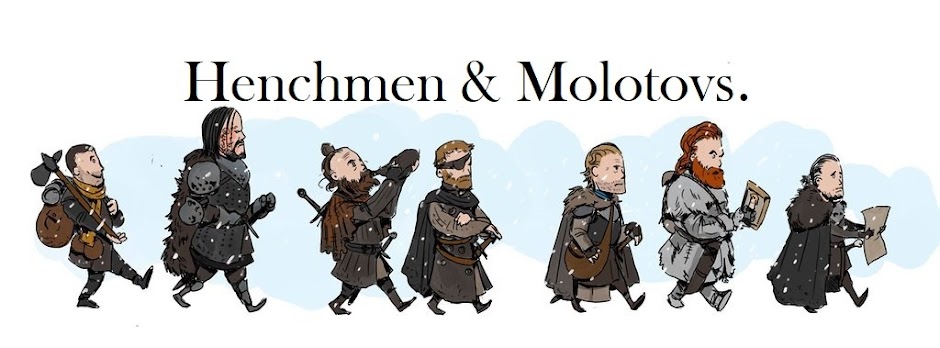There are two other parts to balancing encounters the old school way that we need to talk about. They are allowing the several players agency to set the goals for their adventure session, and giving the players game space to make decisions.
 |
| What? No Cleric? |
There is a text book's worth of analysis and basic and advanced rules for playing in this way, but the most important thing to remember is that the animating force of the adventures has to come from the player's side of the screen and not the Ref's side. If the Ref is telling the players what to do with their characters, that's a red flag.
So that's agency.
The other part of balancing encounters is that you need to leave room for the characters to progress slowly as well as quickly. For instance, the first dungeon level should have much more treasure and many more monsters and traps than it would take for the party to achieve second level. They don't hit second level and DING! head downstairs. That would be the Ref telling the players what to do! It's so critically important for the players to be able to keep their characters in the "shallow end" and for them to have meaningful content there as well.
That may mean putting five times as many rooms and five times as much treasure as they would need to hit level 2. It may mean restocking that dungeon level through some mechanism, such as new monsters from deeper in (but in this case, not tougher) lairing up closer to the surface. In reality, it's probably good to use both of these methods in tandem. In the Wilderlands, it's easy to say that the characters missed something on their first survey and there was more to be found after all, so that's a third way for you the Ref to provide more room for the characters and more agency for the players. Additionally, because of the open nature of a hexcrawl, there should be plenty of opportunities for characters to backtrack to unexplored areas they missed because of their direction of travel - more so than even in a dungeon.
And that's space.
Along with the critical relationship between risk, reward, and distance, player agency and the game space for characters to work in make it possible for old school encounters to balance in a different way from new school encounters. It happens in real time at the table and may result in real character death. These are exciting prospects which will bring your players back again and again.

No comments:
Post a Comment
Stay focused.